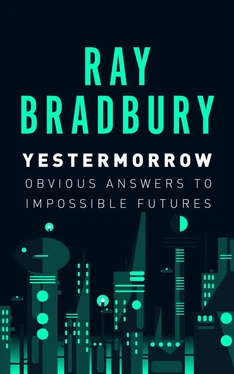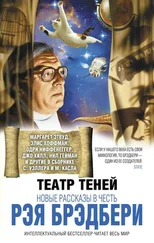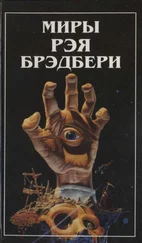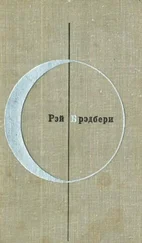“A final touch, my dear young lady. In the past few years, visiting France, I have fallen in love with the work of the French architect Viollet-le-Duc, who rebuilt Pierrefonds, Carcassonne, part of Notre Dame de Paris, and who designed and placed the stone gargoyles up there in the wind and rain. Returning to Disneyland last year, I saw a spire on the side of Sleeping Beauty’s castle, a duplicate of the convoluted and beauteous spire Viollet-le-Duc raised atop Notre Dame one hundred years ago. I called John Hench out at Imagineering, ‘John,’ I said, ‘how long has Viollet-le-Duc’s spire been on the side of Sleeping Beauty’s castle?’ ‘Thirty years,’ said Hench. ‘My God,’ I said, ‘I never noticed before! Who put it there?’ ‘Walt,’ said Hench. ‘Why?’ I asked. ‘Because he loved it,’ said Hench.
“Because he loved it.” Something not needed but needed, not necessary but necessary. Costing approximately $100,000. But added to the castle at that time because Walt wished it to be there. Because of Walt, Viollet-le-Duc lives in America.
“Oh, Monsieur Bradbury,” cried the lady editor in Paris. “You make me feel so good!”
“Because,” I replied, “it’s true .”
What else is true? Besides Euro-Disney, what other wonders have Sklar and Hench summoned up by striking the earth with Walt’s old sketchbook?
Norway, with its fjords and dragon-headed ships as part of the EPCOT Showcase territory.
A pulsing heartbeat excursion through the human body in the Wonders of Life adventure at EPCOT Center.
And the lazarus-like resurrection, out of the California tombs, of Hollywood itself!
Millions of Japanese camera-hung tourists fastbrake their limousines at Hollywood and Vine each year. Leaping out merrily, they are shocked to be greeted by slimy winos, dilapidated hookers, arthritic dogs, burned-out hot dog stands and homeless vagrants whose arms look fresh from a porcupine fusillade.
All this being true, do you rebuild Hollywood? Yes!
But, two-thousand miles away! at the Disney-MGM Studios at Walt Disney World.
Here stands Grauman’s Chinese, when it first rose to confound the apple-yard architects and cowboy real estate agents of the 1920s. Here lives Hollywood and Vine as it never was but should have been, with real movie stars on each corner. The last time anything like that happened was when Cecil B. DeMille drove his chariots through the intersection, on his way to Galilee. Once, as a child on roller skates, I thought I saw Clark Gable there, flagging a taxi. But it was another country, another time. Disney will rebirth the whole thing. Harlow, Gable and Colbert would feel right at home parading down this boulevard.
Ironic then, that while the old Hollywood staggers toward a renovation that will maunder on until 2005, Disney’s Tinsel Town, for the same cost, will long since be up and operating.
Like Hollywood, like America, like the world.
For the simple fact, proven over and over in the history of towns and cities, is that city fathers and chambers of commerce know not habitations, nor much of anything else. The cities have gone to ruin and the people a ruination within. With no imaginative cures, the mayors and councils have floundered and sunk in tar and taxes. The Disney duchies are the answer.
The Disney duchies? Men who answer to the motto: In excellentia lucrum. In excellence is profit. Imagineers who show up, ask for carte blanche, no interference from dreamless officials high or low, and proceed to blueprint a city and build a dream.
Just a few years back, Houston Intercontinental Airport asked Imagineering to create a PeopleMover to sort out and distribute the airport’s mobs.
Imagineering has just completed a master plan for recreating the remnants of the 1962 Seattle World’s Fair, delivering forth a fresh new Seattle Center.
With this as a beginning, by century’s end, most if not all of our American towns will have been touched and changed all for the good, by Walt’s Paris-inspired, France-rejuvenated ghost.
After Walt died, a rumor had it that he had become a giant popsicle at some cryonics morgue in East Azusa. Not so! How ridiculous! Walt didn’t have to immortalize himself.
As he himself said: “Nothing has to die.”
So—turn backward, turn backward, O Time in thy flight. Let old cities and new arise.
And Walt? Hell, he’s not dead. Just hiding out, like the hipbone of old Abraham L. and the Renaissance, at Disney Imagineering.
Or, as he said to me one day when I asked him to run for mayor of Los Angeles:
“Oh, Ray, why should I be mayor, when I’m already king?”
As for the Hipbone of Abraham L.? When the Disney technicians finished a new model of Lincoln and were ready to discard the old robot, someone, looking at the mechanical hipbone, said, “What’ll we do with this?”
“Why,” said someone else, “send it to Ray Bradbury.”
They did.
It’s here, on my desk, as I write.
1988
MOVIOLA MICKEY or HOW TO JUMP-START A MOUSE AND ANIMATE AN ANIMATION MUSEUM
“Who are we? What are we? Where have we been? Where are we going?”
It was Disney Imagineering calling in 1988.
“What do you mean?” I asked. “Don’t you know who you are and what you’ve done?”
“Yes,” they said, “but you know better, you’re outside the skin, we can’t see ourselves for the seeds. Come over.”
So I worked, or rather played, for a week with Roy Disney, John Hench, Van Romans, and some other artists who sat in to illustrate our chat as it came out of our mouths. The great thing about Disney is that you say, or type something in the morning, and by late afternoon, you have ten or twenty pen and ink or watercolor sketches to put flesh on your conversational-IBM-Selectric III-typewriter bones.
It turned out that the Disney folks wanted to blueprint a Museum of Animation.
Easy as cartoon pie, I said, remembering that I had got my Mickey Mouse Club pin at the Genesee Theater in Waukegan, Illinois when I was ten, and had seen all three hundred of the Mouse and Silly Symphony Cartoons from 1927 on.
Well, not quite cartoon-pie simple. Roy Disney and John Hench handed over some plans and photos of an Animation Exhibit already in cardboard cut-out, mock-up shape. Which is to say fascinating but not fascinating enough.
Then they all looked at me for answers. What could I add, subtract, or subdivide on the right side of my head? The whole plan was terribly still, awfully quiet, like many other museum exhibits over the centuries. Did I have an electric charge on me somewhere so I could jolt the entirety to life?
I searched my pockets for several days of meetings, riffled through all my Mouse and Dinosaur Fantasia books, and rummaged among some sketches I had birthed at age fourteen. In bed with a cold, I had crayoned forth some bad reproductions of Mickey, Donald Duck and Horace Horsecollar. Carrying these with me, I went back to the studio for what might have been a final round of what looked to be a frustrating talk.
Then, someone threw a plastic photo of Goofy on the table. In it were imbedded seven or eight images of the confused and hyperactive Dog. As you moved the photo or your head, Goofy circled about in various antic poses, continuously in action. I had never seen a so-called three-dimensional photo with so many positions and actions trapped and ready to move. I held onto Goofy for a full two or three minutes, making him run, pause, or leap backward. A sheer delight. Out of this delight I at last said:
“Can we get six- or eight-foot-tall photos like this reproduced by any company anywhere in the United States?”
No one was quite sure, they would look into it. “But why?”
Читать дальше











